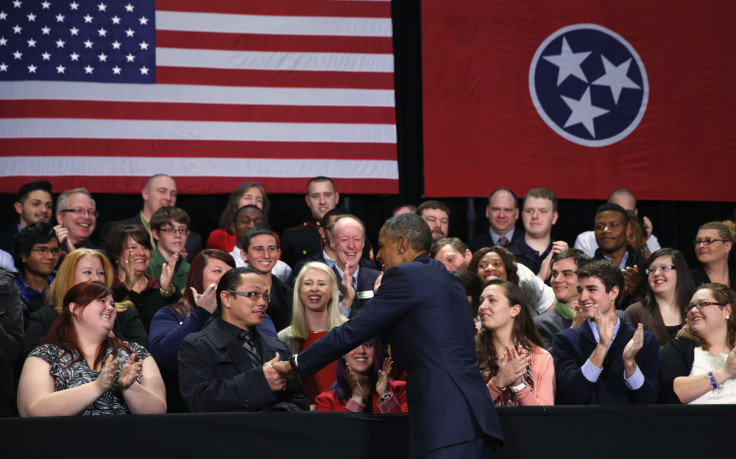Obama Free Community College Plan: Hispanic Students Could Benefit Most

Hispanic students who find higher education too expensive, too daunting or too hard to balance with work may be the biggest demographic to benefit from President Barack Obama's free community college proposal. Community college is already a popular option with Latino students, and making the process easier could increase enrollment even more.
About half of all Hispanics who are enrolled in higher education attend a community college -- the highest group of any race, according to a Pew Research Center study published Tuesday. In 2013, almost a quarter of all two-year college students were Hispanic, up from 14 percent in 2000.
The "America's College Promise" proposal, which Obama mentioned in Tuesday night's State of the Union address, would give students two tuition-free years of community college. Participants would have to maintain a 2.5 GPA, be enrolled at least half-time and make progress toward finishing their degree programs. The intent is that those students would then jump to four-year colleges and universities and eventually enter the workforce.
The plan is aimed at low-income, first-generation minority students -- "and many Hispanic students fit all of those categories," said Luis Maldonado, chief advocacy officer for the Hispanic Association of Colleges and Universities in Washington, D.C.
Community colleges are often the nearest school to a student's home, so they tend to be the most convenient. Lower transportation costs make enrolling there more affordable, Maldonado said. If Obama's plan makes community college even cheaper, there's a good chance more students will take advantage.
That's especially important for Hispanic students, about half of whom come from families whose income is less than $40,000. "If we are able to take money out of the equation ... it opens more doors of opportunity," Maldonado said.
For many Hispanic high school seniors who would be first-generation college students, the hardest thing about college is figuring out how to apply. They value higher education but don't know to get it, Maldonado said. If Obama's plan becomes widely publicized, students and their families will likely receive more information on enrollment and see college as a viable option.
That's one of the reasons the plan is a good idea, said Deborah Santiago, chief operating officer and vice president for policy at Excelencia in Education in Washington, D.C. "I think it's a wonderfully positive message about college access, that college is possible, and it sets expectations for student attainment," Santiago told NBC News.
The provision in Obama's proposal that only requires students be enrolled half-time could also help Hispanics. Many Latino students are reticent to take out loans, Maldonado said, and in order to pay for college often work multiple jobs while taking classes. If community college is free, they can choose to work instead of being forced to. Even those who do work won't be burdened with full-time commitments.
Although critics of "America's College Promise" say the Republican-run Congress would never pass the funding for it, Maldonado said he doesn't see higher education as a partisan issue. "If this particular plan is not approved, at least there's a conversation around how can we best facilitate access, retention and success," he said.
© Copyright IBTimes 2024. All rights reserved.






















